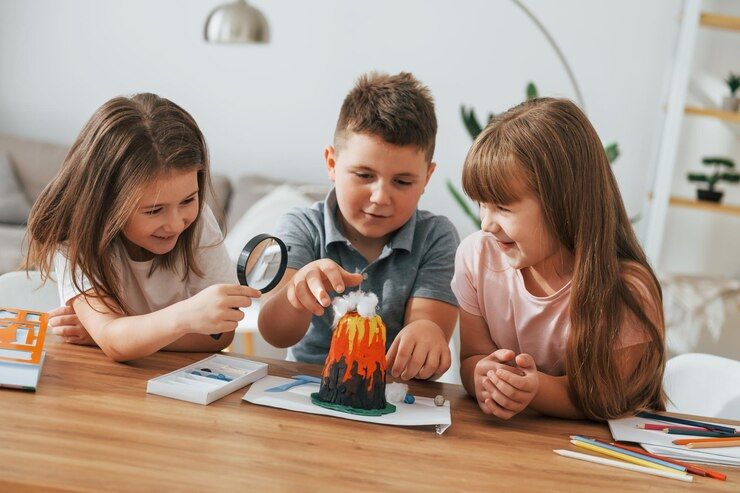Have you ever watched your child turn a cardboard box into a spaceship or create an entire world with just a few toys? This kind of imaginative play is more than just fun, it’s shaping their ability to solve problems later in life. Problem-solving skills start developing at an early age, and creativity plays a huge role in strengthening them.
Let’s explore how encouraging imaginations helps kids think critically and adapt to challenges.
The Connection Between Creativity and Problem-Solving
Creativity isn’t just about drawing, painting, or crafting, it’s about thinking in new and flexible ways. When kids engage in imaginative activities, they learn how to adapt, think critically, and come up with solutions on their own.
They develop the ability to see multiple solutions, work through frustrations, and approach problems with confidence.
How Creativity Helps Build Problem-Solving Skills
Here’s how you can help your child build problem-solving skills:
1. Creativity Encourages Critical Thinking
When children experiment with new ideas, they have to think about what works and what doesn’t. This trial-and-error process teaches them critical thinking, an essential part of problem-solving.
2. Imaginative Play Teaches Adaptability
A child pretending to be a chef might suddenly “run out” of an ingredient and have to find a substitute. This kind of play teaches kids how to adjust their plans when things don’t go as expected, a skill they’ll use in real-life situations.
3. Open-Ended Activities Build Resilience
Creative tasks, like solving puzzles or inventing stories, often come with challenges. When kids keep trying, even after something doesn’t work the first time, they build resilience. An important skill for overcoming obstacles in school, relationships, and future careers.
4. Creativity Helps with Decision-Making
When kids play, they constantly make decisions, about what to build, what to draw, and how to act out a scene. These small choices add up, strengthening their ability to analyze situations and make thoughtful decisions as they grow.
5. Artistic Expression Develops Emotional Intelligence
Creativity also helps children understand and manage their emotions. Whether through storytelling, music, or role-playing. They learn to process feelings and find solutions to emotional challenges, an important part of problem-solving in relationships and social interactions.
How to Encourage Creativity for Stronger Problem-Solving Skills
You can easily support your child’s creativity and problem-solving skills with simple, everyday activities:
- Provide open-ended toys like building blocks, craft supplies, or dress-up clothes that encourage imaginative play.
- Allow for unstructured playtime where your child can explore ideas without strict rules or limitations.
- Encourage storytelling by having them make up their own bedtime stories or draw their own comic books.

Conclusion
Encouraging creativity in kids is one of the best ways to build strong problem-solving skills that will benefit them throughout life. By providing opportunities for imaginative play and critical thinking, you’re helping your child develop the confidence to tackle challenges and think outside the box.
A great way to show children the power of imagination and problem-solving is through storytelling. I Wish My Mommy Was An Octopus by Erin Shular is a heartwarming example of how creativity helps children process their emotions and think in new ways. The book highlights the special bond between a mother and child while encouraging young readers to think creatively.
Order now for a fun read with your child to spark their creativity.




